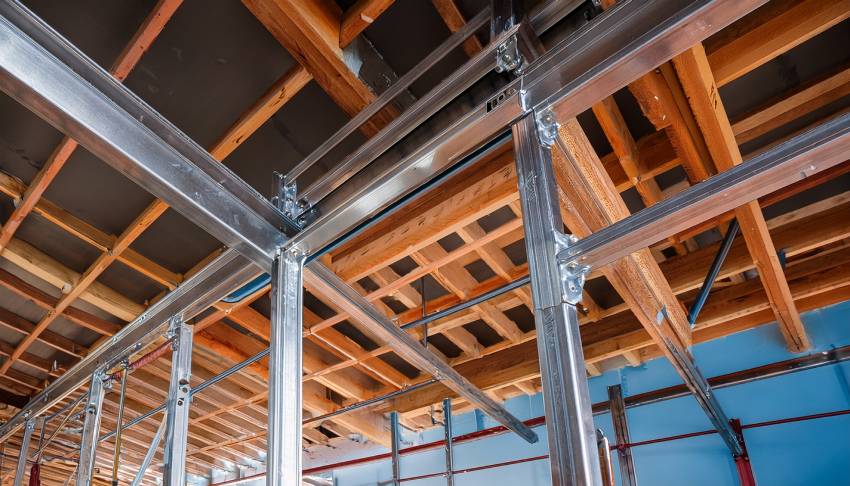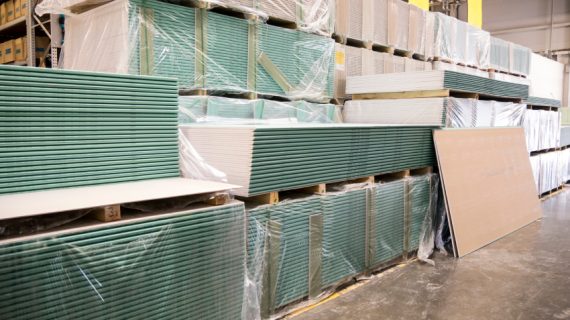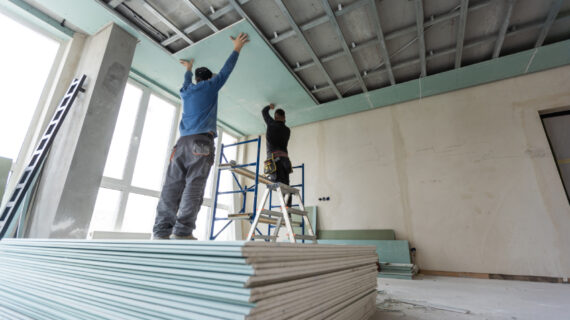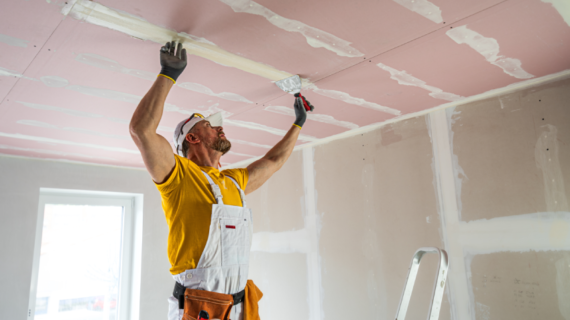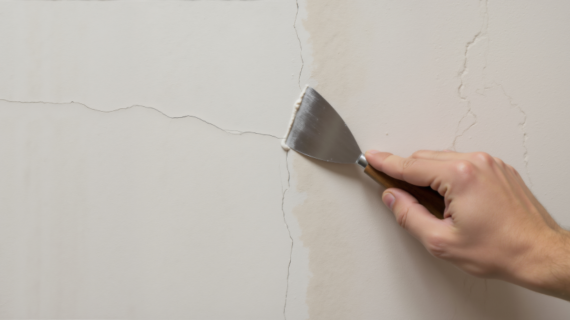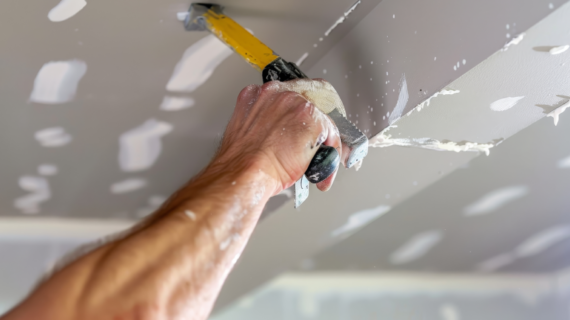The Complete Drywall Systems Guide
From installation mistakes to soundproof drywall and sustainability, see how Mada Gypsum delivers full-system support. Read what you need here.
Here’s something most contractors won’t tell you: drywall isn’t just about slapping up some sheets and calling it done. That’s the comfortable lie we tell ourselves when projects go sideways and walls start cracking six months later.
The truth? Drywall systems are exactly that—systems. Every component has to work together. Miss one piece, use the wrong fastener, or ignore humidity control, and you’re looking at failed systems that cost more to fix than they would have cost to do right the first time.
Most suppliers will sell you products and wish you luck. But when your project needs troubleshooting at 2 AM, suddenly everyone’s expertise gets quieter. That’s where the full-system approach matters—having someone who understands how all the pieces fit together and can help you avoid expensive mistakes.
This guide covers the real challenges you face with drywall systems, from material selection that actually makes sense to installation mistakes that everyone makes but nobody talks about.
Gypsum Board vs Fiber Cement Board
Let’s start with the comparison most suppliers dance around. Gypsum board wins on cost—we’re talking about a 60-70% price difference. It’s also significantly lighter at 1.6 pounds per square foot versus fiber cement’s 2.5-3 pounds. That weight difference affects labor costs, structural requirements, and installation timelines more than most people realize.
But fiber cement board has its place. In high-moisture environments, it simply performs better. It won’t grow mold, won’t deteriorate when wet, and maintains structural integrity in conditions that would turn gypsum board into a soggy mess.
Here’s the reality check: if you’re installing interior walls in a standard commercial building with proper HVAC, gypsum board will perform fine for decades. Fiber cement becomes critical in specific applications—pool areas, commercial kitchens, or anywhere you expect regular water exposure.
Installation complexity matters too. Gypsum board cuts cleanly with a utility knife and finishes smooth with standard techniques. Fiber cement requires power tools, creates silica dust needing proper ventilation, and demands more precise installation. Your crew needs different skills, different tools, and more time.
When fiber cement is the right choice, the higher upfront cost pays for itself by eliminating callbacks and long-term maintenance issues. The key is being honest about whether your specific project actually needs those benefits.
Why Sustainability in the Construction Industry is Important for Future Generations
Here’s the uncomfortable number: our industry accounts for 37% of global greenhouse gas emissions. Not industrial emissions—all emissions. That’s bigger than transportation.
Most sustainability conversations get bogged down in marketing speak about recycled content. The real environmental impact happens across the entire lifecycle—from raw material extraction through disposal. For drywall systems, the biggest impact often isn’t the material itself—it’s how long the building lasts and how efficiently it performs.
A drywall system that fails prematurely has a much larger environmental footprint than a more expensive system that performs reliably for decades. This is where the systems approach to sustainability makes sense.
Energy efficiency matters too. Properly installed drywall systems contribute to building envelope performance, directly affecting heating and cooling energy use over the building’s lifetime. A building that uses 20% less energy for climate control over 30 years has a much smaller environmental impact.
Waste reduction during construction is another critical factor. Drywall waste results from poor planning, installation mistakes, and outdated practices. Better planning, precise installation, and systems that reduce callbacks all contribute to environmental performance. Read our system guide now.
For future generations, sustainability isn’t just environmental—it’s economic. Construction methods that waste materials or result in inefficient buildings create burdens that get passed down. Sustainable practices that reduce waste, improve durability, and enhance performance create long-term value.
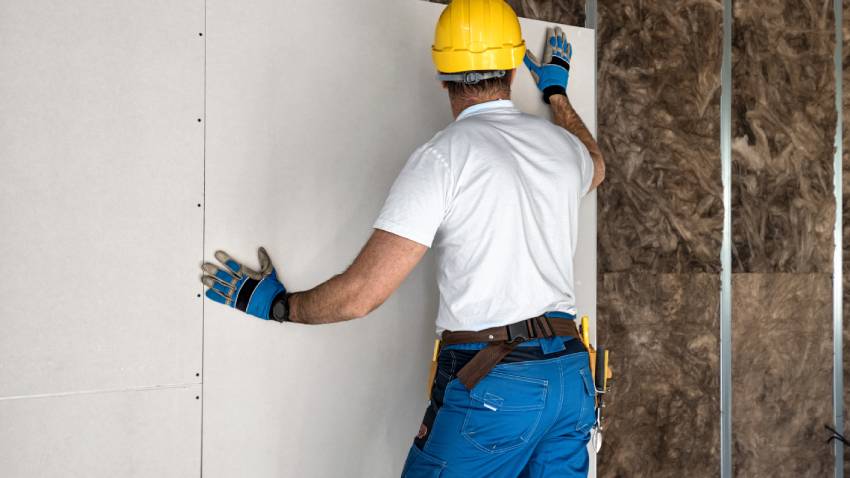
Plasterboarding: The Core of High-Performance Wall Systems
“High-performance” has become a meaningless buzzword. Real high-performance comes down to measurable outcomes: fire resistance ratings, acoustic performance, thermal properties, durability, and moisture management. These aren’t marketing concepts—they’re engineering specifications that determine whether a building performs as designed.
The plasterboarding process is where high-performance systems succeed or fail. It’s about creating a continuous system that manages air movement, moisture transfer, thermal bridging, and structural loads while maintaining fire resistance and acoustic performance.
Substrate preparation is where many installations go wrong. Framing must be properly aligned and braced. Thermal bridging through metal studs needs addressing. Air sealing details must be planned and executed correctly. These aren’t drywall issues—they’re system issues affecting entire wall assembly performance.
Joint compound selection and application technique matter more in high-performance systems. Standard compounds work fine for basic applications, but high-performance systems often require specialized compounds that maintain properties under different environmental conditions.
What separates actual high-performance systems from marketing claims is testing and verification. Real systems have documented test results and manufacturers who can tell you exactly how their system performs under specific conditions.
But high-performance systems aren’t always the right choice. They cost more, require skilled installation, and deliver benefits that may not be necessary. The key is understanding what performance characteristics actually matter for your specific project.
Mold in Walls: Prevent Humidity and Protect Interior Spaces
Mold has become the boogeyman of construction, generating more fear than facts. The magic number for mold prevention is 60% relative humidity. Above that, mold growth becomes likely. The ideal range is 30-50%, with the sweet spot around 35-45%.
But humidity control isn’t just about room air—it’s about moisture management throughout the entire wall system. Vapor barriers are the most misunderstood component. In cold climates, they go on the warm side. In hot, humid climates, they may need to go on the exterior side. Many contractors install them the same way regardless of climate, creating the moisture problems they’re supposed to prevent.
Material selection plays a bigger role than most realize. Mold needs organic material to grow on, which is why paper-faced gypsum board can be problematic in high-moisture environments. Mold-resistant gypsum board uses fiberglass facing, eliminating the food source mold needs.
Air sealing is often more important than vapor barriers for mold prevention. Air carries moisture, and air leaks can transport much more moisture into wall cavities than vapor diffusion through materials.
Here’s the reality check: most mold problems result from water leaks, not humidity control failures. Rapid response to water intrusion is more important than expensive mold-resistant materials in most applications.
The Most Common Drywall Installation Mistakes to Avoid
Every contractor has a drywall disaster story. Most failures come down to installation mistakes everyone makes but nobody admits.
The biggest mistake is inadequate edge support, particularly at inside corners. Inside corners need proper backing, sized and positioned correctly. Inadequate support means corners that crack within the first year and callbacks that cost more than prevention.
Fastener depth is another critical issue. Screws need to be just below the surface without breaking the paper facing. Too shallow, and screw heads telegraph through finish. Too deep, and you’ve compromised holding power. The problem is that “just below the surface” is a feel thing that comes with experience.
Measurement and cutting mistakes compound throughout installation. A sheet cut 1/8″ too short creates a gap requiring joint compound fill. That joint is weaker, more likely to crack, and takes more time to finish properly. Multiply that by hundreds of sheets, and small errors become major problems.
Joint alignment matters too. Butt joints should be staggered, not aligned, to prevent long continuous joints prone to cracking. T-joints should be avoided where possible.
Quality control during installation could prevent most problems. Simple checks—fastener depth, joint alignment, edge condition—take minutes but prevent hours of remedial work later.
Plasterboarding: The Core of High-Performance Wall Systems
“High-performance” has become a meaningless buzzword. Real high-performance comes down to measurable outcomes: fire resistance ratings, acoustic performance, thermal properties, durability, and moisture management. These aren’t marketing concepts—they’re engineering specifications that determine whether a building performs as designed.
The plasterboarding process is where high-performance systems succeed or fail. It’s about creating a continuous system that manages air movement, moisture transfer, thermal bridging, and structural loads while maintaining fire resistance and acoustic performance.
Substrate preparation is where many installations go wrong. Framing must be properly aligned and braced. Thermal bridging through metal studs needs addressing. Air sealing details must be planned and executed correctly. These aren’t drywall issues—they’re system issues affecting entire wall assembly performance.
Joint compound selection and application technique matter more in high-performance systems. Standard compounds work fine for basic applications, but high-performance systems often require specialized compounds that maintain properties under different environmental conditions.
What separates actual high-performance systems from marketing claims is testing and verification. Real systems have documented test results and manufacturers who can tell you exactly how their system performs under specific conditions.
But high-performance systems aren’t always the right choice. They cost more, require skilled installation, and deliver benefits that may not be necessary. The key is understanding what performance characteristics actually matter for your specific project.
Mold in Walls: Prevent Humidity and Protect Interior Spaces
Mold has become the boogeyman of construction, generating more fear than facts. The magic number for mold prevention is 60% relative humidity. Above that, mold growth becomes likely. The ideal range is 30-50%, with the sweet spot around 35-45%.
But humidity control isn’t just about room air—it’s about moisture management throughout the entire wall system. Vapor barriers are the most misunderstood component. In cold climates, they go on the warm side. In hot, humid climates, they may need to go on the exterior side. Many contractors install them the same way regardless of climate, creating the moisture problems they’re supposed to prevent.
Material selection plays a bigger role than most realize. Mold needs organic material to grow on, which is why paper-faced gypsum board can be problematic in high-moisture environments. Mold-resistant gypsum board uses fiberglass facing, eliminating the food source mold needs.
Air sealing is often more important than vapor barriers for mold prevention. Air carries moisture, and air leaks can transport much more moisture into wall cavities than vapor diffusion through materials.
Here’s the reality check: most mold problems result from water leaks, not humidity control failures. Rapid response to water intrusion is more important than expensive mold-resistant materials in most applications.
The Most Common Drywall Installation Mistakes to Avoid
Every contractor has a drywall disaster story. Most failures come down to installation mistakes everyone makes but nobody admits.
The biggest mistake is inadequate edge support, particularly at inside corners. Inside corners need proper backing, sized and positioned correctly. Inadequate support means corners that crack within the first year and callbacks that cost more than prevention.
Fastener depth is another critical issue. Screws need to be just below the surface without breaking the paper facing. Too shallow, and screw heads telegraph through finish. Too deep, and you’ve compromised holding power. The problem is that “just below the surface” is a feel thing that comes with experience.
Measurement and cutting mistakes compound throughout installation. A sheet cut 1/8″ too short creates a gap requiring joint compound fill. That joint is weaker, more likely to crack, and takes more time to finish properly. Multiply that by hundreds of sheets, and small errors become major problems.
Joint alignment matters too. Butt joints should be staggered, not aligned, to prevent long continuous joints prone to cracking. T-joints should be avoided where possible.
Quality control during installation could prevent most problems. Simple checks—fastener depth, joint alignment, edge condition—take minutes but prevent hours of remedial work later.
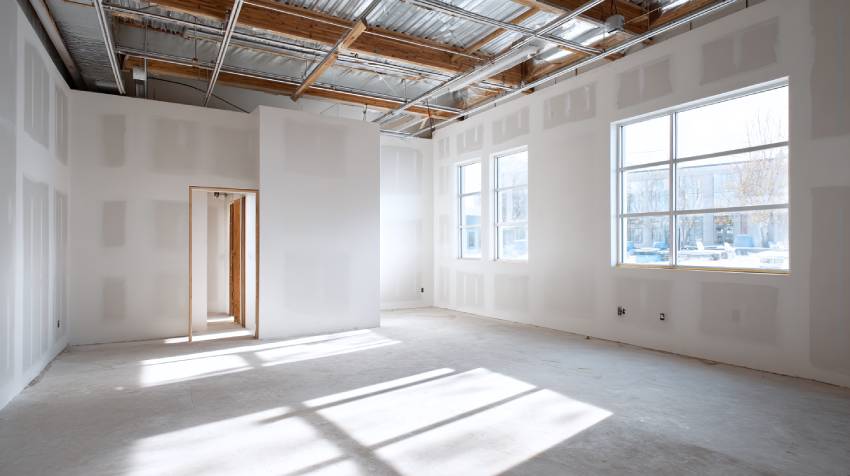
The Benefits of a Single Source Supplier for Drywall Systems
Single-source procurement gets dismissed as convenience, but the real value is system compatibility, technical support, and risk management that multiple suppliers can’t deliver.
The hidden cost of multiple suppliers is coordination complexity. Different delivery schedules, quality standards, and technical support capabilities create problems when something goes wrong—and something always goes wrong.
System compatibility is where single-source suppliers deliver real value. When components come from different suppliers, compatibility isn’t guaranteed. Joint compounds that don’t adhere properly, fasteners that don’t provide adequate holding power, or corner beads that don’t integrate smoothly can create expensive problems.
Technical support from a single supplier who understands the entire system can address system-level problems rather than just component issues. Quality consistency is easier to maintain, and administrative efficiency gains are real but underestimated.
Risk management is where single-source suppliers really differentiate themselves. When problems occur, there’s one point of accountability. No finger-pointing, no disputes about compatibility, no confusion about warranty coverage.
Single-source procurement makes the most sense for complex projects where system integration is critical, projects with tight schedules where coordination complexity could cause delays, and projects where long-term performance and warranty coverage are priorities.
Installing Soundproof Drywall for Stadium Acoustic Control
Regular drywall in a stadium is like bringing a knife to a gunfight. Stadium acoustics involve sound levels exceeding 120 decibels—loud enough to cause hearing damage if not properly managed.
Specialized soundproof drywall systems use multiple layers, damping compounds, and decoupling techniques. Products like QuietRock achieve STC ratings of 50-60 with single-layer installation, compared to 35-40 for standard gypsum board.
But STC ratings only tell part of the story. Stadium acoustics involve low-frequency sound from crowd noise and music systems that’s difficult to control with standard materials. The difference between soundproofing and sound absorption gets confused constantly, but it matters. Soundproofing blocks transmission between spaces. Sound absorption reduces reverberation within spaces.
Installation technique is critical. Systems work by decoupling drywall from structure to prevent sound transmission. This requires resilient channels, isolation clips, or other decoupling methods that must be installed correctly.
Sealing is another critical factor often overlooked. Sound leaks through gaps and penetrations that compromise acoustic performance. Acoustic sealants and proper detailing around penetrations are essential.
The cost is significantly higher—typically 3-5 times standard systems. But inadequate acoustic control creates ongoing liability and operational costs that far exceed the initial investment.
Stadium acoustic design requires specialized expertise beyond material selection. Early involvement of acoustic consultants prevents expensive redesign and remedial work.
Mada Gypsum’s Full-System Support
The common thread through every challenge is that drywall systems work best when components are designed to work together. Most suppliers sell products and hope you figure out integration. Mada Gypsum takes a different approach.
Full-system support means understanding how components interact with each other and building systems. When dealing with moisture management, Mada Gypsum helps select not just mold-resistant gypsum board, but the complete system of vapor barriers, joint compounds, and finishing materials that work together.
Full-system support also means accountability beyond individual components. When problems occur, there’s one contact who understands the entire system and can help resolve issues quickly. No finger-pointing, no confusion about compatibility.
The technical support goes beyond troubleshooting to preventing problems. Proper specification assistance, installation guidance, and quality control support help ensure systems perform as designed from the beginning.
For contractors who understand that drywall systems are exactly that—systems—the full-system approach delivers measurable value through better outcomes, fewer callbacks, and stronger client relationships.
Ready to see how full-system support can improve your next project? Contact Mada Gypsum to discuss your requirements and learn how integrated solutions can deliver better performance, reduce risk, and improve your bottom line.

